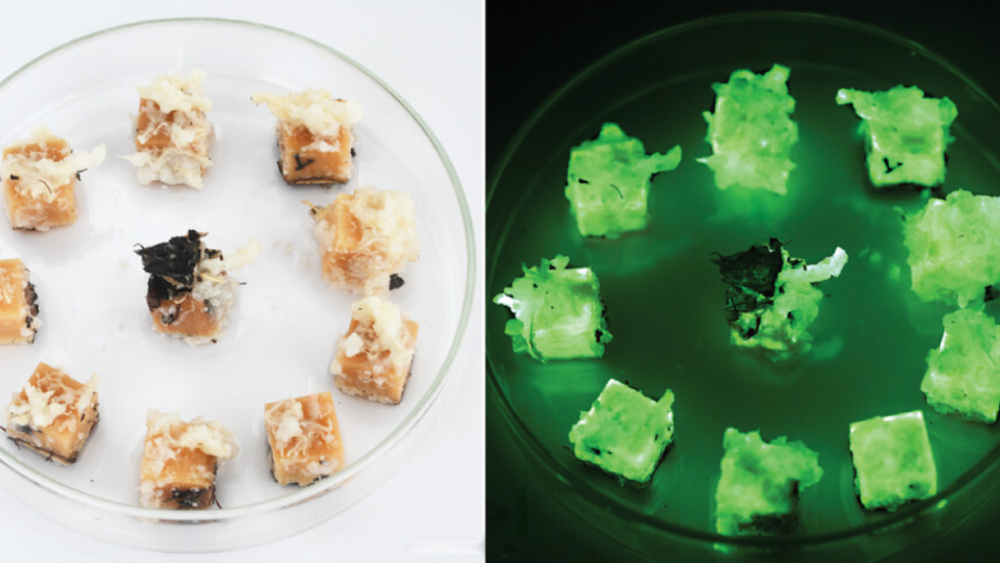A team of scientists have created a new kind of wood that glows in the dark thanks to the presence of a fungus that exhibits bioluminescence. It sounds like a building material fresh out of Avatar, but this ghostly glow is seen in nature as what’s known as “foxfire” – a phenomenon that inspired the team to try and work it into building materials.
Equipping wood with new functionalities is part of a wider goal to find more sustainable uses for Swiss hardwood than burning, which is where a lot of it currently goes. That goal has most recently extended to creating luminous wood in a project led by fungal researcher Francis Schwarze from Empa’s Cellulose & Wood Materials lab in St. Gallen.
Getting it to glow all hinged on a parasite known as ringless honey fungus, Desarmillaria tabescens, which produces luciferin. Under the right conditions, this luciferin glows as the result of enzyme activity, so Schwarze and colleagues tried to recreate the effect in wood samples that had been permeated by its fungal threads. In doing so, they borrowed a nifty trick of nature to create a material that could theoretically be applied to all kinds of things, from luminous park signs to a very ghostly home esthetic.
“Naturally luminous wood was first described around 2,400 years ago by the Greek philosopher Aristotle,” Schwarze said in a release. “Artificially produced composite materials of this kind would be interesting for many types of application.”

The glowing wood in all its glory.
Honey fungus isn’t the only kind that glows, there are actually over 70 species that show bioluminescence, but it’s a good option for making luminous wood as it can infiltrate it without reducing its stability. The team observed how it snuck into the balsa wood samples by degrading lignin, but that the remaining cellulose was enough to keep the balsa wood strong.
Blending the fungus and wood in this way created a biohybrid, one that’s at its most glowy when it has been incubated for three months. During that time, the balsa wood took on eight times its weight in moisture to accommodate the honey fungus’s love of all things wet.
The enzyme reaction that facilitates the bioluminescence is triggered when the biohybrid fungus-wood is exposed to air, fully kicking in after about 10 hours as it emits green light with a wavelength of 560 nanometers. The glow then lasts for around 10 days, and the team hopes they can up the wow factor with some tinkering.
“We are now optimizing the laboratory parameters in order to further increase the luminosity in the future,” added Empa researcher Giorgia Giovannini.
If things glowing that you didn’t expect to is your bag, then you’ll love the work of Finding Fluorescence – a team trying to track down animals that glow thanks to a curious trick of the light that differs from bioluminescence. They just added 15 new species to their list, and you can see some of them in all their fluorescent wonder here.
The study is published in Advanced Science.
Source Link: Glowing Wood Now An Option Thanks To A Curious Fungus’s Ghostly Bioluminescence